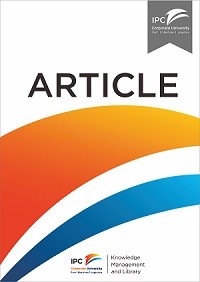Article
Understanding supply chain management concepts in the context of port logistics: an explanatory framework
In academia as in practice, seaports are increasingly viewed as elements in supply chains. It is argued that seaports should add value to shippers by aligning their own business activities with shippers’ Supply Chain Management (SCM) strategies and requirements. The implications of this ‘port-SCM’ philosophy are not fully explored, however. In this context, it is especially important to create mutual understanding between shippers, in terms of their SCM strategies, and port actors, in terms of services provided. In this paper a framework is developed, which aims to improve mutual understanding between shippers and port actors from a SCM point of view. It thereby aims to contribute to the dialogue on how the port logistics system can be better integrated into shippers’ SCM strategies. Three SCM reference models are analysed and twelve SCM subsystems identified that represent broad design areas of shippers’ SCM strategies. Further, the seaport system is discussed in terms of system boundaries and the actors involved. Port actors and SCM subsystems are then combined into one explanatory framework, the SCM-port actor matrix. Finally, applying the matrix, three cases retrieved from academic and trade literature in which port actors are actively involved in conducting shippers’ supply chain strategies are discussed. The paper concludes with a brief outlook on future research needs
Ketersediaan
Informasi Detail
- Judul Seri
-
Transport
- No. Panggil
-
ATC LO HER u
- Penerbit
- Germany : Taylor and Francis., 2014
- Deskripsi Fisik
-
11 p.
- Bahasa
-
English
- ISBN/ISSN
-
1648-3480
- Klasifikasi
-
LO
- Tipe Isi
-
-
- Tipe Media
-
-
- Tipe Pembawa
-
online resource
- Edisi
-
2014 Volume 29(4): 376–385
- Subjek
- Info Detail Spesifik
-
-
- Pernyataan Tanggungjawab
-
Nico Herz
Versi lain/terkait
| Judul | Edisi | Bahasa |
|---|---|---|
| Global logistics : new directions in supply chain management | Fifth Ed. | en |
| Strategic supply chain management | en |
Lampiran Berkas
Komentar
Anda harus masuk sebelum memberikan komentar

 Karya Umum
Karya Umum  Filsafat
Filsafat  Agama
Agama  Ilmu-ilmu Sosial
Ilmu-ilmu Sosial  Bahasa
Bahasa  Ilmu-ilmu Murni
Ilmu-ilmu Murni  Ilmu-ilmu Terapan
Ilmu-ilmu Terapan  Kesenian, Hiburan, dan Olahraga
Kesenian, Hiburan, dan Olahraga  Kesusastraan
Kesusastraan  Geografi dan Sejarah
Geografi dan Sejarah